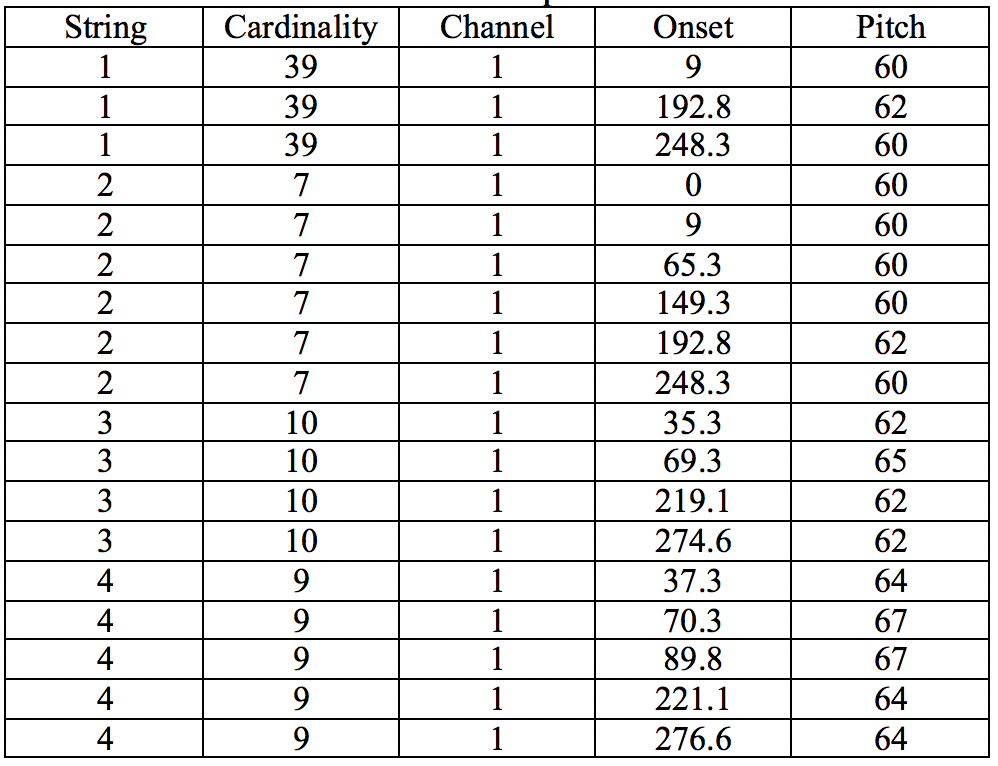EMViz (Early Music Visualization) provides built-in pattern recognition for symbolic music based on a contour recursion algorithm by Carter-Enyi (2016) producing visualizations of musical form using arc diagrams, as proposed by Wattenberg (2002). The algorithm brings together contour theory (Morris 1987, Quinn 1996, Schultz 2013) with studies of melodic accent (Thomassen 1982, Huron 2006). Symbolic music data (.midi, .xml) from various sources (including ELVIS at McGill and the Yale Classical Archives Corpus) may be imported, analyzed and visualized in a matter of minutes. Arc diagram visualizations in the supplemental materials include music from the Liber Usualis, Josquin des Prez and J. S. Bach.
All materials (including source code) are hosted at this public GitHub repository: https://github.com/carterenyi/emviz
There are no prerequisites for the Windows standalone application. MATLAB runtime will be downloaded from the web as part of the installation process. If you have MATLAB 2018b or later, you will not need to install MATLAB Runtime and may also run individual scripts (source code) which may also be downloaded from the github repository.
Detailed instructions for installation on Windows:
- You will need a web connection to complete installation because MATLAB Runtime (also free) will also be downloaded and installed when you run the application installer
- At the link above, download the “EMVizWindows” folder or “EMVizWindows.zip” (and unzip)
- Find the “AppInstaller” folder and double-click “MyApplicationInstall_web.exe”.
- Because this software is not from an “App Store”, you will likely need to override some security preferences after expanding/unzipping and clicking on the.exe, to do this right-click or control-click and select “Run as administrator”
- The installation process (which requires an internet connection) may take 5 to 20 minutes depending on the download speed of your internet connection (it is downloading MATLAB Runtime so your computer can interpret the source code)
Before importing MIDI files of your own or those found through the Internet, it is recommended that you test basic functionality using one of the provided MIDI files, specifically: LiberUsualis_Alleluia_Exsultate.mid
- Click “Select the MIDI file”
- Use default settings (i.e. selection box on “Use Pitch” and minimum cardinality at “5”)
- Click “Run Analysis and Plot”
- Wait for analysis (this file is small so run time should be 5 to 10 seconds)
- When the diagram appears, compare it to the image below.

- Click “Export Data as CSV”, navigate to the folder with the MIDI file, open the CSV file with the same filename (ideally, with Microsoft Excel) and compare to the sample CSV output below.

Additional MIDI files for testing are included in the repository. You should be able to reproduce the images in paper.md
MATLAB 2018b with Compiler.
Please read contributing.md for details on our code of conduct, and the process for submitting pull requests.
- Aaron Carter-Enyi carterenyi@gmail.com
This project is licensed under the MIT License - see the LICENSE file for details
- Inspired by Martin Wattenberg's Shape of Song and the phonology of Niger-Congo (African) tone languages.
- Funded by the American Council of Learned Societies (ACLS) and National Endowment for the Humanities (NEH)
